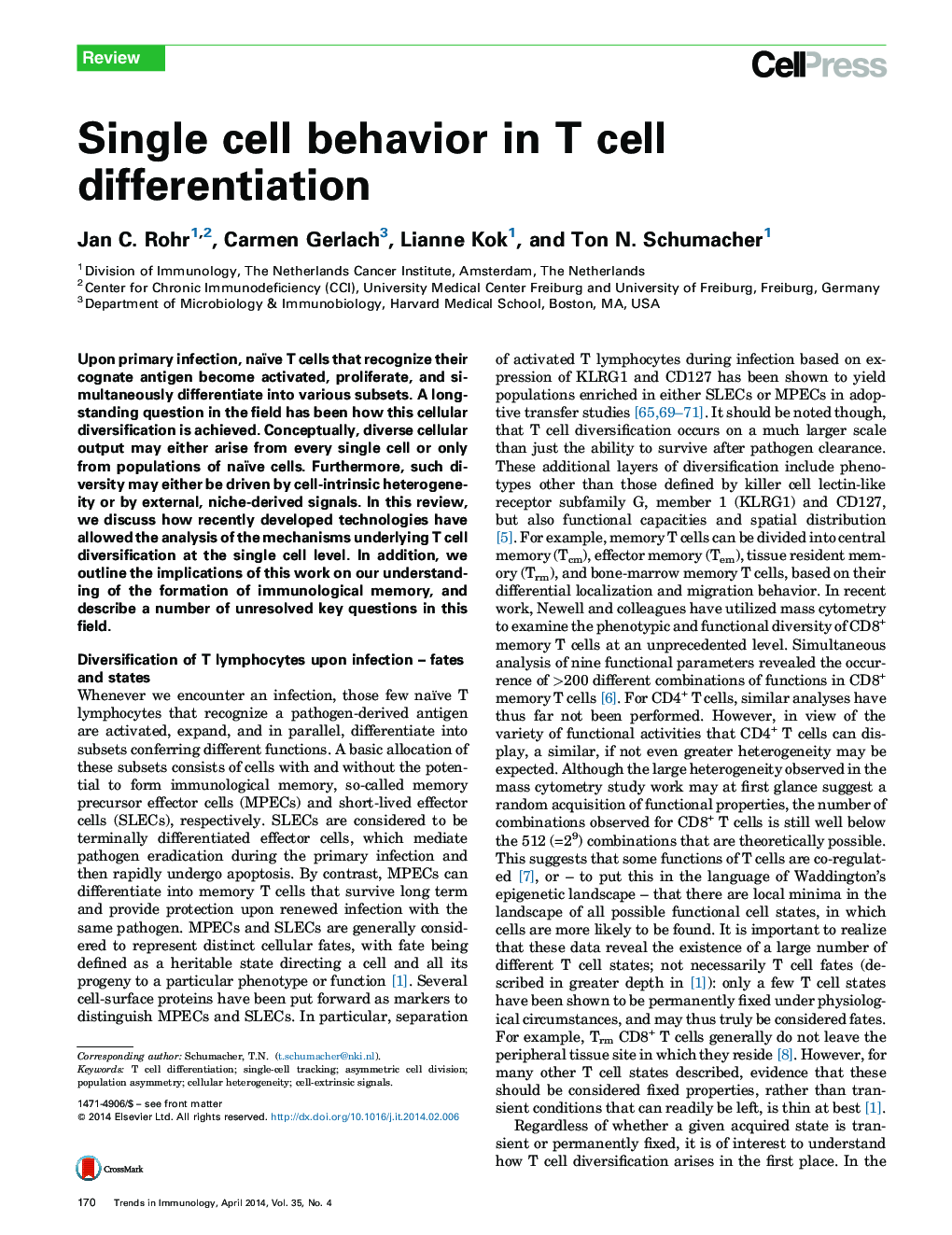| Article ID | Journal | Published Year | Pages | File Type |
|---|---|---|---|---|
| 6288238 | Trends in Immunology | 2014 | 8 Pages |
Abstract
Upon primary infection, naïve T cells that recognize their cognate antigen become activated, proliferate, and simultaneously differentiate into various subsets. A long-standing question in the field has been how this cellular diversification is achieved. Conceptually, diverse cellular output may either arise from every single cell or only from populations of naïve cells. Furthermore, such diversity may either be driven by cell-intrinsic heterogeneity or by external, niche-derived signals. In this review, we discuss how recently developed technologies have allowed the analysis of the mechanisms underlying T cell diversification at the single cell level. In addition, we outline the implications of this work on our understanding of the formation of immunological memory, and describe a number of unresolved key questions in this field.
Related Topics
Life Sciences
Immunology and Microbiology
Immunology
Authors
Jan C. Rohr, Carmen Gerlach, Lianne Kok, Ton N. Schumacher,
